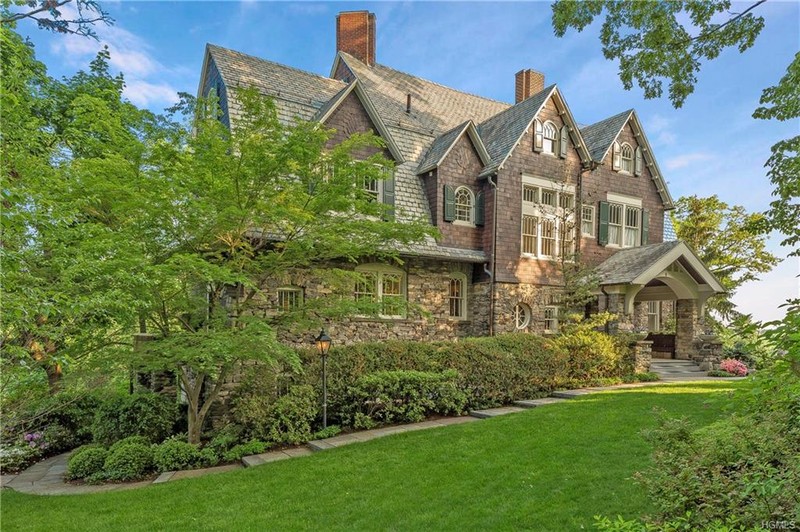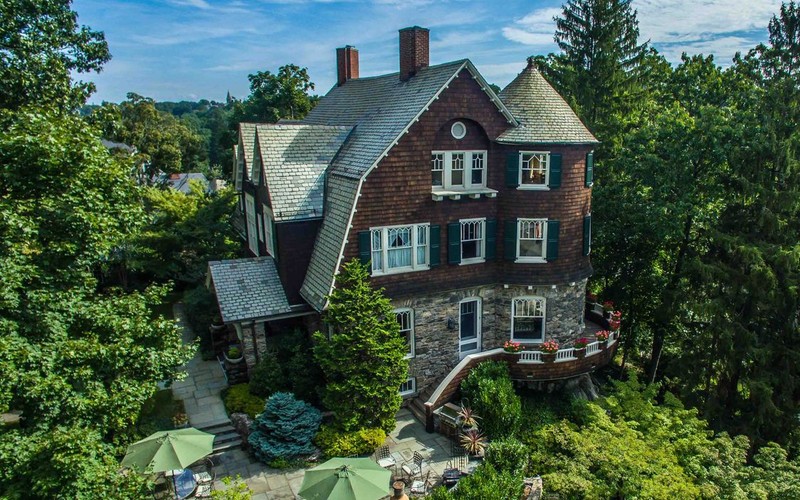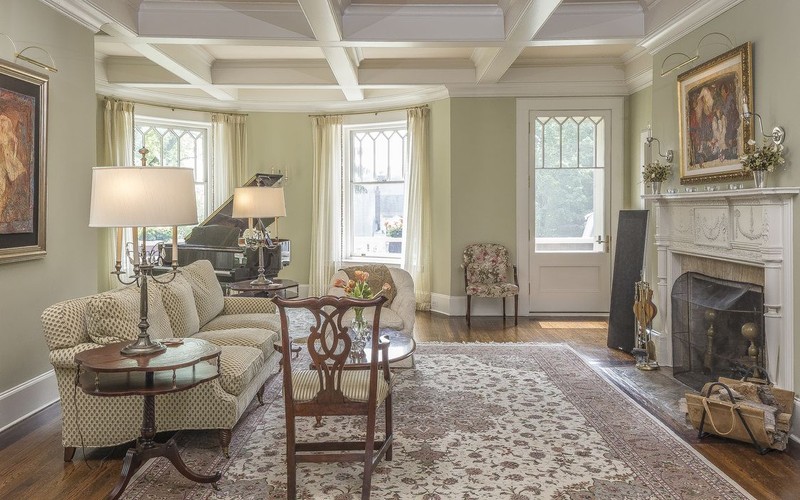Elizabeth Custer House--Laurentia
Introduction
Text-to-speech Audio
Images



Backstory and Context
Text-to-speech Audio
After the death of George Custer, Elizabeth Custer would dedicate the rest of her life writing about and defending the legacy of her late husband. She feared that he would become a historical scapegoat and to counteract that, she would publish three books about their life together on the Western frontier. Due to the popularity of her books, she would be away frequently and would lease the fully furnished house during her time traveling.[1]However, even when she was in Bronxville, Elizabeth would not regularly stay at her home—instead opting to stay at the Lawrence family’s Hotel Gramatan.[2]
Elizabeth Custer commissioned the construction of the 6 Chestnut Avenue estate in 1902. The building would be designed by William A. Bates and would be considered by many to be one of his finest works.[3]The building is a stone and shingle fifteen room house which features a three story tower—a trademark of Bate’s architecture—that at its base, has a wraparound balcony. Prior to the completion of Laurentia—the name that Elizabeth would give to the house in honor of William and Sarah Lawrence—Elizabeth had already had a tenant lined up to move into the new estate.[4]
Lawrence Park is considered to be an architectural, cultural, and historical significant location in Westchester County and to this day presents a distinctive turn-of-the century suburban ambiance. Lawrence Park was designed with great care as William Van Duzer Lawrence personally oversaw the development. The roads at Lawrence Park were planned by following the worn cow paths of the old Prescott Farm in order to preserve the large trees and other natural features of the property.[5]Elizabeth Custer’s draw to Lawrence Park was due to her friendship with the Lawrence Family however, Laurentia would prove to be a large part of Lawrence Park’s historic significance as it is an excellent example of suburban residential design.
Sources
[1]Bronxville Historical Conservancy, “20 Park Avenue & 6 Chestnut Avenue”, accessed July 27, 2020. https://bronxvillehistoricalconservancy.org/events/20-park-avenue-6-chestnut-avenue/.
[2]Gray Williams, “Picturing Our Past: National Register Sites in Westchester County” (Elmsford, New York: Westchester County Historical Society, 2003), 329.
[3]Houlihan Lawrence, “Custer House Far From its Last Stand”, North of N.Y.C., accessed July 27, 2020. https://northof.nyc/archive/elizabeth-custer-laurentia/.
[4]Eloise L. Morgan & Bob Marshall, Building A Suburban Village: Bronxville, New York 1898-1998(Bronxville Centennial Celebration, Inc., 1998), 32.
[5]National Register of Historic Places Inventory—Nomination Form, “Lawrence Park Historic District”, January 23, 1980, Westchester County Historical Society Archives, accessed July 28, 2020.
https://www.coldwellbankerhomes.com/ny/bronxville/6-chestnut-avenue/pid_14538158/
https://www.6sqft.com/colonial-bronxville-mansion-built-by-general-george-custers-widow-hits-the-market-for-5m/
https://www.6sqft.com/colonial-bronxville-mansion-built-by-general-george-custers-widow-hits-the-market-for-5m/
